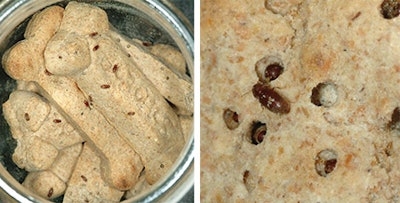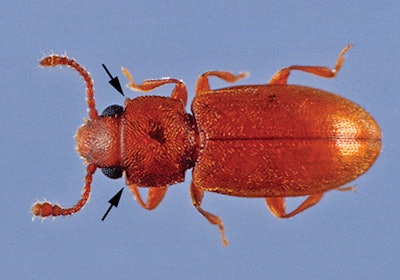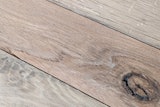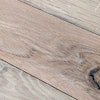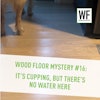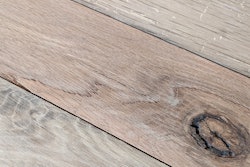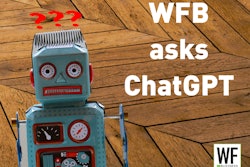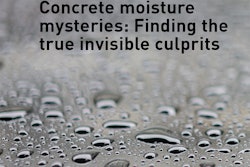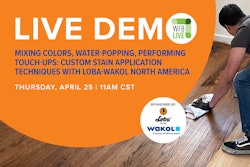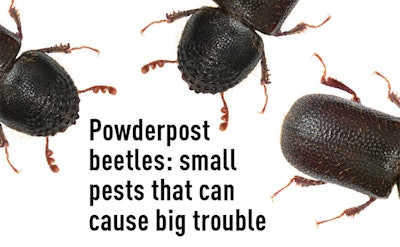
The chaos usually starts with a call about some type of insect emerging from the wood floor you recently installed for one of your customers. From there, you might find out that one or more exterminators have already told your client (incorrectly) that their entire floor needs to be replaced, or at least, resanded and sprayed with a pesticide. Unfortunately, these scenarios can and do happen to wood flooring pros, and they can threaten your very livelihood. Reading the facts in this article will help you understand these pests and how to develop a plan of action in case your floors fall victim to an insect invasion.
What are powderpost beetles?
Various insects infest wood within dwellings, most notably termites, carpenter ants and beetles. Similar-looking bugs that are not wood infesters also appear in buildings, so correct identification is crucial. In respect to the wood flooring industry, wood boring beetles, specifically those called "powderpost beetles," are the group meriting the most attention.
"Powderpost beetle" is a term used to describe several species of small (1/8–3/4-inch-long) insects that reduce wood to a flour-like powder. The grub-like larvae make narrow, meandering tunnels in wood as they feed. Newly emerged beetles mate and lay eggs beneath the surface of bare, unfinished wood. The eggs hatch into tiny larvae that bore in the wood, emerging as adults months to years later.
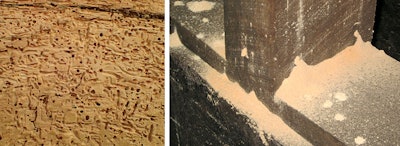 Powderpost beetles make narrow, meandering tunnels as they feed, producing small round holes accompanied by wood powder. Photos courtesy Michael F. Potter
Powderpost beetles make narrow, meandering tunnels as they feed, producing small round holes accompanied by wood powder. Photos courtesy Michael F. Potter
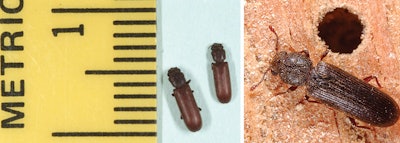 Lyctid powderpost beetles. Photos courtesy Michael F. Potter (left) and Tom Myers (right)
Lyctid powderpost beetles. Photos courtesy Michael F. Potter (left) and Tom Myers (right)
Warning signs
Because the adult beetles are cryptic and active mainly at night, customers are more likely to see holes and powder than the beetles themselves. Occasionally, a beetle might be spotted emerging from an exit hole or on a windowsill, since some are attracted to light.
Tunneling and development take place entirely below the wood surface, so infestations are normally missed during the wood flooring installation process. Infestations are usually discovered after noticing powder, accompanied by small, round "shot holes" on the wood surface. These are exit holes where adult powderpost beetles have chewed out of the wood after completing their development.
There are different types of powderpost beetles, with different behaviors and warning signs. The most common types infesting wood flooring are lyctids and bostrichids. Lyctids tend to be more common, but both varieties can inflict damage. A third category, anobiids, seldom infest indoor flooring because they require elevated wood moisture, although they are sometimes found in reclaimed wood from old barns, etc.
Lyctid powderpost beetle facts
These are small (1/16–1/4 inch), narrow and elongated, reddish-brown to black beetles. Their emergence holes are round and about the size of a pinhead. The powdery dust feels like flour or fine talc and often accumulates in small piles near the holes.
Lyctids attack only hardwoods, such as oak, ash, walnut, hickory, maple and cherry. Because of this, lyctid problems typically arise in floors, molding, cabinetry and furniture. Tropical hardwoods are especially prone to infestation due to poor storage and drying practices before importation.
Lyctid powderpost beetles do not infest pine and other softwoods, so structural wood members are generally immune from attack. This is important to communicate to customers, who often worry that infestations in flooring will spread into walls, studs, etc. Lyctid beetles also avoid softwood plywood used for subflooring.
Lyctids do not infest wood via surfaces that are stained, coated, waxed or painted. After they emerge and mate, beetles locate susceptible wood to lay their eggs. Ten to 50 eggs per female are inserted into the tiny pores and vessels of unfinished hardwoods. Although they don't infest wood through coated surfaces, beetles already within infested wood can emerge through subsequently finished surfaces. Before depositing eggs, female lyctid beetles "test" the suitability of wood; if the starch content of the wood is insufficient, the females will not use it for egg laying. Lower starch levels also make it harder for the larvae to complete their development.
Lyctids are less particular about moisture than other types of powderpost beetles, and larvae can persist in wood with a moisture content as low as about 8 percent. However, at such low moisture levels, beetles develop more slowly, just as they do in older wood with declining starch content. Infestations eventually cease and die off even without intervention. In newly seasoned wood with abundant starch and other nutrients, egg to adult development takes less than a year. As wood ages, starch content declines, and development slows to the point where some beetles may not emerge for two or more years, if at all. This is an important factor when weighing options.
Small numbers of lyctid beetles already in the wood may continue to emerge for up to about five years.Homeowners should be informed of this possibility, and that the prolonged emergence is due to diminished suitability of the wood rather than re-infestation by other beetles.
Bostrichid powderpost beetle facts
Bostrichids also cause problems in hardwood flooring, but less often than lyctids. Most species attacking wood products are brown to black ranging in length from 1/8–1/4 inch. Compared with lyctids, bostrichids are less narrow-bodied and flattened, and the head is oriented downward, appearing "hooded." Many species also have tiny, rasp-like bumps behind the head. Like other powderpost beetles, bostrichids create circular 1/8–1/4-inch holes in wood. Their wood powder is more meal-like than lyctid powder and tends to remain tightly packed in the holes and feeding galleries of the larvae.
Bostrichid powderpost beetles are more serious pests of hardwood than softwood, and they pose little risk to structural framing within homes. Similar to lyctids, bostrichids usually attack newly processed wood with high starch and moisture content. Tropical hardwoods and bamboo are especially vulnerable to attack, which often occurs before importation. Like lyctids, bostrichids seldom re-infest wood after the first generation emerges. Nonetheless, extensive damage can occur the first year due to a high initial population and rapid development.
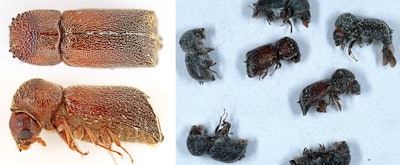 Bostrichid powderpost beetles. Photos courtesy Tom Myers (left) and Michael F. Potter (right)
Bostrichid powderpost beetles. Photos courtesy Tom Myers (left) and Michael F. Potter (right)
Is the infestation active?
Powderpost beetle infestations often die out of their own accord. The first step is determining if the infestation is active. Here are some questions to ask:
Is there powder by the exit holes?Active infestations usually have powder recently pushed out of some of the exit holes onto the flooring surface. Old, abandoned holes will have no accompanying powder and will have taken on the aged appearance of the surrounding wood.
Are the holes "angled?" Holes that appear to be on an angle suggest beetle emergence occurred before cutting and planing.
Is there stain or finish in the holes? If the floor was previously stained or coated, new emergence holes will have no traces of stain or finish inside the holes.Another way to confirm that an infestation is active is to mark or seal any existing holes, sweep or vacuum up all existing powder, and recheck the wood for new holes and powder later on. Since beetle emergence often occurs in spring or summer, it is useful to wait until then to determine if new holes and fresh powder are present.
Active infestations should not cause panic
Remember that beetle damage occurs slowly, and there is little threat to other wood items in the building. As noted previously, these kinds of beetles usually enter homes in manufactured materials such as flooring, cabinetry, molding, paneling, furniture, etc. Infestation occurs after logs are sawn into lumber and the wood sits in storage, or during transit and distribution. Therefore, it is prudent for suppliers and installers to inspect incoming materials for signs of beetles before turning them into finished products. Wood that is suspect should not be used, especially if emergence holes or powder is present.
The majority of powderpost beetles emerge from wood flooring in the first few years after installation. Damage can be significant if large numbers of eggs were initially inserted into the wood.There are various reasons why powderpost beetles have a hard time re-infesting flooring and other wood items within homes. As wood ages, levels of starch, moisture, and other nutrients decline to the point where the pests can no longer complete their development, and the declining number of adult beetles that do manage to emerge have a hard time finding mates. Propagation and spread are further diminished because most interior surfaces are sealed/finished—once stain, finish, etc., is applied, wood surfaces are no longer suitable for laying eggs. Although undersides of floors, cabinets, and furniture remain unfinished, declining starch and moisture makes re-infestation via these areas unlikely. The same is true of any beetles attempting to lay eggs in former emergence holes; sealing the holes further prevents this possibility.
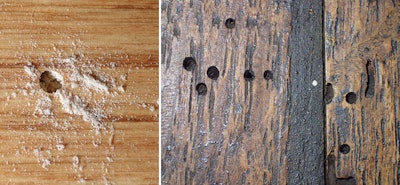 Active versus inactive infestations: The active infestation (on the left) usually has fresh powder accompanying the emergence holes. Inactive infestations like the one on the right have holes that were present before the wood was stained and/or coated. Photos courtesy Michael F. Potter
Active versus inactive infestations: The active infestation (on the left) usually has fresh powder accompanying the emergence holes. Inactive infestations like the one on the right have holes that were present before the wood was stained and/or coated. Photos courtesy Michael F. Potter
Remediation options
As just discussed, usually infestations will run their course, and the beetles will eventually die out. If there is an active infestation, the best approach depends on extent of the damage, potential for re-infestation, and cost—both financial and emotional—to the parties involved.
Wood Replacement: Since infestations tend to be self-limiting, it is often advisable to replace only those sections of flooring showing signs of beetle activity. This is especially true when holes and powder are limited to small sections of flooring or a few pieces of molding, trim, etc. As an added precaution, it may be prudent to replace planks directly adjacent to any that are damaged since larval tunneling sometimes extends from one plank to the next. Beetle emergence holes in any planks that were not replaced should be sealed, and all visible wood powder should be vacuumed up so that old damage will not be mistaken for new. For additional peace of mind, a reputable pest control firm can be retained to inspect annually for a few more years to ensure all activity has ceased. Although it cannot be forecast precisely when no more emergence will occur, future damage should be minimal, and if additional holes do appear, an agreement can be made with the customer to cover additional wood replacement.
Residual Insecticides: Various insecticides are available to treat beetle-infested wood, although their use for wood flooring is limited. Insecticides known as borates are most widely used for this purpose (Bora-Care and Tim-bor are two popular formulations). Spraying the wood surface may kill beetles as they emerge and young larvae tunneling inward, but borate insecticides are most commonly used for insects infesting joists, studs, sills and other structural elements of buildings. Their depth of penetration into wood depends on moisture content: The damper the wood, the deeper borates penetrate. The wood surface must also be unfinished since the spray will not penetrate water-repellent coatings. For this reason, borate products have more limited use for treating infestations within living areas of homes. They are sometimes used to treat beetle-infested wood floors, but floors must be sanded to raw wood first.Apart from being laborious and disruptive, insecticides are seldom necessary since the emerging beetles are unlikely to re-infest. Furthermore, the moisture content of wood flooring in temperature-controlled buildings is low—typically below 10 percent. Borate penetration in wood this dry is minimal and likely would have little effect on developing larvae already within the flooring.
Fumigation: Fumigation is an extreme and costly option for ridding a home of powderpost beetles. Homes undergoing fumigation are covered and tightly sealed with tarps, and occupants must remain out for at least a day. Current fumigants (e.g., Vikane/sulfuryl fluoride) are less effective on wood-boring beetles than former compounds that are no longer available. Consequently, de-infestation may not be successful. Furniture and other portable items can be fumigated more efficiently and at a substantially lower cost than treating an entire building.
How do infestations originate?
Powderpost beetles usually start emerging from flooring and other manufactured items within a year of installation. In most cases, some of the wood contained developing beetles before installation. While such beetles sometimes infest firewood, this seldom has anything to do with infestations in flooring.
The wood items with the most beetle holes and powder are the most likely source of introduction. For example, if most of the holes and powder are in kitchen cabinetry, it is doubtful the flooring was primarily involved. It is often hard to determine where and when materials became infested before installation. Generally, the longer wood sits in a vulnerable state during processing, drying, distribution and storage, the greater the chance beetles will find and lay eggs on the lumber. Consequently, manufacturers and suppliers of flooring materials often have more culpability for such problems than installers do—especially when the materials were purchased and installed over a comparatively brief period.
Manufacturers and retailers of flooring often incorrectly assume their products could not possibly have contained live beetles when initially sold because the wood had previously been kiln dried. Although kiln drying at temperatures of about 125–140 degrees Fahrenheit is sufficient to kill all stages of insects, even wood that is properly kiln dried can become infested during subsequent distribution and storage. Consequently, assertions by manufacturers and suppliers that their materials could not contain live beetles because they were kiln dried are invalid.
Closing thoughts
Beetle problems in wood flooring can be stressful and costly to suppliers, installers, and their customers. It is important to diagnose the problem correctly to avoid unnecessary effort and expense. Identifying the beetle involved and whether the infestation is active are crucial first steps. Other considerations include the extent of infestation and the type, age and moisture content of the wood. Since powderpost beetles damage wood slowly, take some time to educate the parties involved and develop a plan of action. As discussed, drastic measures such as removing all of the flooring or fumigating the home are usually unnecessary.
Clients sometimes have concerns that such infestations will harm the future value of their home. Since beetles in flooring do not perpetuate indefinitely, this should not be a big concern, especially after the pests are no longer active. Many more homes have been treated for termites and have retained their market value; beetles in wood flooring are even less threatening.
Mistaken identitiesMany similar-looking beetles that are not powderpost beetles occur within buildings, and this can cause trouble when wood floors are wrongly accused. It is important to know the difference to avoid confusion and prevent costly, unnecessary treatments and repairs. Definitive diagnosis often requires confirmation by an entomologist or knowledgeable pest control specialist. Here are two cases where wood flooring was mistakenly initially blamed as the source of these beetles:
Food-infesting beetles: Powderpost beetles are sometimes confused with other small beetles infesting such food items as flour, cereal, grains, seeds, or pet food. The source is often in kitchens, pantries, etc. The beetles above, thought to be infesting a brand new floor, were living in a container of dog biscuits.
Foreign grain beetle: Another pest group often mistaken for powderpost beetles scavenge on surface molds associated with damp conditions. One of the most common is the foreign grain beetle. The beetles are small (about 1/16-inch long), brownish, and abundant. None of the beetles in this category damage wood; once the moisture condition is resolved, the surface molds disappear along with the beetles. An exterminator initially misidentified this foreign grain beetle at left and recommended full-floor replacement.—M.P |











